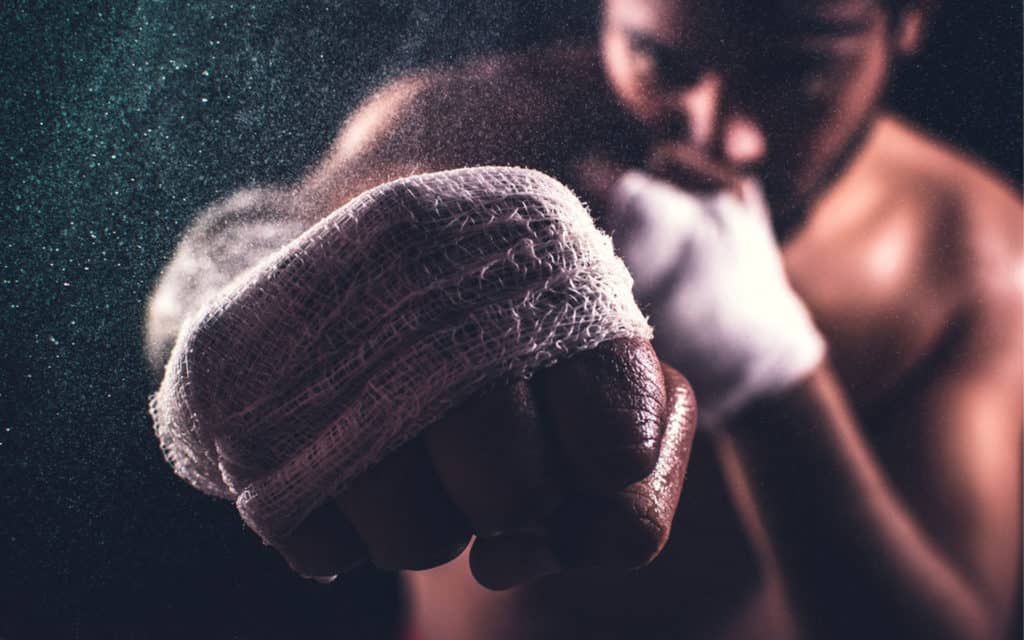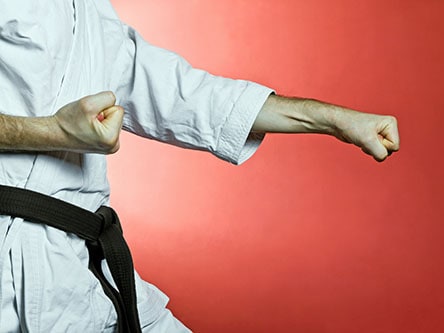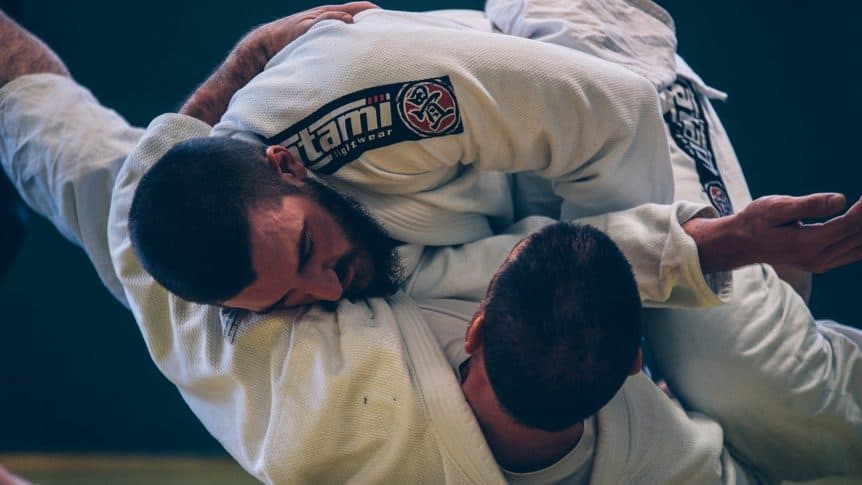
Choosing between Taekwondo and Jiu-Jitsu can feel overwhelming. Taekwondo, a Korean martial art, is renowned for its high-flying kicks and striking techniques, while Jiu-Jitsu—rooted in Japan and refined in Brazil—excels in grappling and submissions.
Whether you’re seeking self-defense skills, fitness, or personal growth, this guide compares their origins, philosophies, techniques, and more to help you decide. Read on to discover the key differences between Taekwondo and Jiu-Jitsu and find the martial art that fits your goals.
Origins of Taekwondo and Jiu-Jitsu
The histories of Taekwondo and Jiu-Jitsu reveal fascinating journeys shaped by culture and conflict. Taekwondo, a Korean martial art, blends ancient striking techniques with modern organization, while Jiu-Jitsu evolved from samurai battlefields in Japan to the ground-fighting phenomenon of Brazilian Jiu-Jitsu (BJJ). Understanding their origins helps you appreciate how these arts developed into the powerhouse disciplines they are today.
History of Taekwondo
Taekwondo, Korea’s national martial art, officially formed in the 1940s, though its techniques trace back centuries to ancient Korean kingdoms like Goguryeo and Silla. These early self-defense systems relied on kicks and strikes, shaped by Korea’s rugged terrain. After years of foreign occupation, particularly by Japan, Korea regained independence post-World War II.
In 1952, pioneers Choi Hong-hi and Nam Tae-hi demonstrated Taekwondo to President Syngman Rhee, who declared it the South Korean army’s martial art. The Kukkiwon (national academy) was established in 1972, followed by the World Taekwondo Federation in 1973, sparking its global rise. Today, Taekwondo is an Olympic sport and one of the world’s most practiced martial arts.
History of Jiu-Jitsu (Japanese and Brazilian)
Jiu-Jitsu’s roots are debated—some trace it to Indian monks—but its modern form emerged in Japan during the Sengoku period (15th century). Known as “Ju-Jitsu,” it was a battlefield art for samurai, focusing on close-combat techniques like throws and joint locks when unarmed or in restrictive armor.
By the 1800s, it splintered into styles, with Judo (created by Jigoro Kano) becoming the most famous offshoot. Kano’s student Mitsuo Maeda brought Jiu-Jitsu to Brazil in the early 20th century, teaching the Gracie family. The Gracies adapted it into Brazilian Jiu-Jitsu (BJJ), a practical, ground-based art now synonymous with “Jiu-Jitsu” worldwide.
Philosophies Compared
Beyond punches and submissions, Taekwondo and Jiu-Jitsu offer life lessons through their core philosophies. Taekwondo’s five tenets build character and discipline, rooted in Korean tradition, while Jiu-Jitsu—particularly BJJ—emphasizes community and humility, forged on the mats of Brazil. Comparing these values shows how each martial art shapes not just fighters, but better people
Taekwondo’s Five Tenets
Taekwondo goes beyond physical training, instilling values through its five tenets:
- Courtesy (Ye-ui): Respect everyone, inside and outside the dojang (training hall).
- Integrity (Yeom-chi): Stand up for what’s right with a strong moral compass.
- Perseverance (In-nae): Push through challenges to achieve your goals.
- Self-Control (Geuk-gi): Master your actions and emotions.
- Indomitable Spirit (Baek-jeol-bul-gul): Show courage against all odds.
These principles shape practitioners into disciplined, ethical individuals—e.g., bowing to an opponent reflects courtesy and respect.
Jiu-Jitsu’s Core Values
Brazilian Jiu-Jitsu fosters a way of life with values like:
- Community: Bonds transcend language or background, uniting practitioners globally.
- Humility: Beginners tap out often, teaching respect for others’ skills.
- Empathy: Training partners support each other’s growth, on and off the mat.
- Selflessness: Helping others improve is a core ethos, like assisting a struggling teammate.
For example, rolling (sparring) with a higher belt teaches humility as you learn from defeat.
Techniques: Striking vs. Grappling

When it comes to techniques, Taekwondo and Jiu-Jitsu couldn’t be more different. Taekwondo dazzles with dynamic kicks and stand-up strikes, perfect for keeping foes at bay, while Jiu-Jitsu masters the art of grappling, using leverage to control and submit opponents up close. This section breaks down their signature moves and what they mean for your training.
Taekwondo Techniques
Taekwondo emphasizes striking, particularly kicks, delivered with speed and precision:
- Sidekicks/Front Kicks: Long-range strikes to push opponents back (e.g., a sidekick to the midsection).
- Punches: Often setups for kicks, like a jab followed by a roundhouse.
- Roundhouses: Fast, snapping kicks to the head or body using the foot or shin.
- Spinning/Jumping Kicks: High-risk, high-reward moves like the spinning heel kick, showcasing power and agility.
These techniques suit stand-up combat, requiring flexibility and coordination.
Jiu-Jitsu Techniques
Jiu-Jitsu is a grappling art, focusing on controlling and submitting opponents:
- Joint Locks: Techniques like the armbar or kimura target joints to force submission.
- Strangulations: Chokes like the rear naked choke or triangle cut off air or blood flow.
- Takedowns/Throws: Borrowed from Judo and wrestling, these bring fights to the ground (e.g., a double-leg takedown).
While some schools offer striking (e.g., in MMA classes), BJJ prioritizes ground control with minimal effort.
Forms and Training Styles

How you practice matters, and Taekwondo and Jiu-Jitsu approach training in distinct ways. Taekwondo relies on structured forms—choreographed patterns that hone precision—across its major schools, while Jiu-Jitsu, especially BJJ, ditches forms for live sparring in formats like Gi and No-Gi. Here’s how their training styles differ and what that means for learners.
Taekwondo Forms
Taekwondo features structured forms (poomsae or taegeuk), memorized sequences of movements taught by major organizations:
- Kukkiwon: Official WTF forms (e.g., Taegeuk 1-8).
- Jhoon Rhee Forms: Simplified, Americanized patterns.
- American Taekwondo Association (ATA): 18 forms with a focus on basics.
- Global Taekwondo Federation (GTF): Similar to WTF with unique twists.
- International Taekwondo Federation (ITF): 24 patterns emphasizing power.
Forms teach technique, balance, and discipline, totaling 24-30 across styles.
Jiu-Jitsu Formats
BJJ lacks traditional “forms” like kata, focusing on live sparring (rolling). Training varies by format:
- Gi Jiu-Jitsu: Uses a kimono for grip-based techniques, slowing the pace.
- No-Gi Jiu-Jitsu: Faster and athletic, with no gi to grab—think rash guards and shorts.
- MMA Jiu-Jitsu: Combines grappling with striking, as seen in UFC fights.
Each format refines the same core skills: control, leverage, and submission.
Belts, Weapons, and Practicality
From belt ranks to real-world use, Taekwondo and Jiu-Jitsu offer unique frameworks for growth and self-defense. Both use colored belts to track progress, but their paths to black belt—and their approaches to weapons—diverge. This section explores these systems and digs into which martial art might edge out the other in a street fight.
Belt Systems
Both arts use colored belts to mark progress:
- Taekwondo: White to black, with intermediate colors (e.g., yellow, green, blue). Black belt takes 3-5 years.
- Jiu-Jitsu: White to black for adults (blue, purple, brown in between); kids have extra colors (e.g., grey). Black belt often takes 10+ years due to BJJ’s complexity.
Use of Weapons
Traditionally, neither Taekwondo nor Jiu-Jitsu uses weapons—they’re unarmed arts rooted in self-defense. However, some Taekwondo schools (e.g., ATA) now teach weapons like bo staffs or nunchucks as electives, while BJJ stays weapon-free.
Real-Life Self-Defense Effectiveness
In a street fight, Jiu-Jitsu often has an edge because most altercations end up on the ground, where BJJ excels at neutralizing threats with minimal injury. A smaller person can submit a larger attacker using leverage (e.g., a triangle choke). Taekwondo shines at a distance, with powerful kicks to deter foes, but it’s less effective if grappling occurs. Your environment matters—open spaces favor Taekwondo; tight quarters suit BJJ.
Which Should You Choose?
Deciding between Taekwondo and Jiu-Jitsu boils down to your goals, lifestyle, and preferences. Whether you’re drawn to Taekwondo’s athletic kicks or Jiu-Jitsu’s tactical grappling, this final comparison—complete with a handy table and pros/cons—will guide you toward the martial art that’s right for you. Let’s weigh the options and get you started.
Quick Comparison Table
| Aspect | Taekwondo | Jiu-Jitsu |
|---|---|---|
| Focus | Striking (kicks, punches) | Grappling (submissions) |
| Fitness | Cardio, flexibility | Strength, endurance |
| Learning Curve | Moderate (3-5 yrs to black) | Steep (10+ yrs to black) |
| Cost | $50-150/month, dobok | $100-200/month, gi/rash guard |
| Best For | Kids, agility-focused | Adults, smaller frames |
Pros and Cons
- Taekwondo Pros: Fun, flashy kicks; great for kids; Olympic sport.
Cons: Limited ground skills; requires flexibility. - Jiu-Jitsu Pros: Effective self-defense; builds resilience; suits all sizes.
Cons: Physically demanding; slower mastery.
Try Before You Commit
Both martial arts offer self-defense and character growth, but they’re big investments. Try a month at each—most schools offer free intros, though a single class won’t reveal the full experience. Ask about trial periods, then pick based on what clicks for you. Find a local dojo or gym today and start your journey!
.

